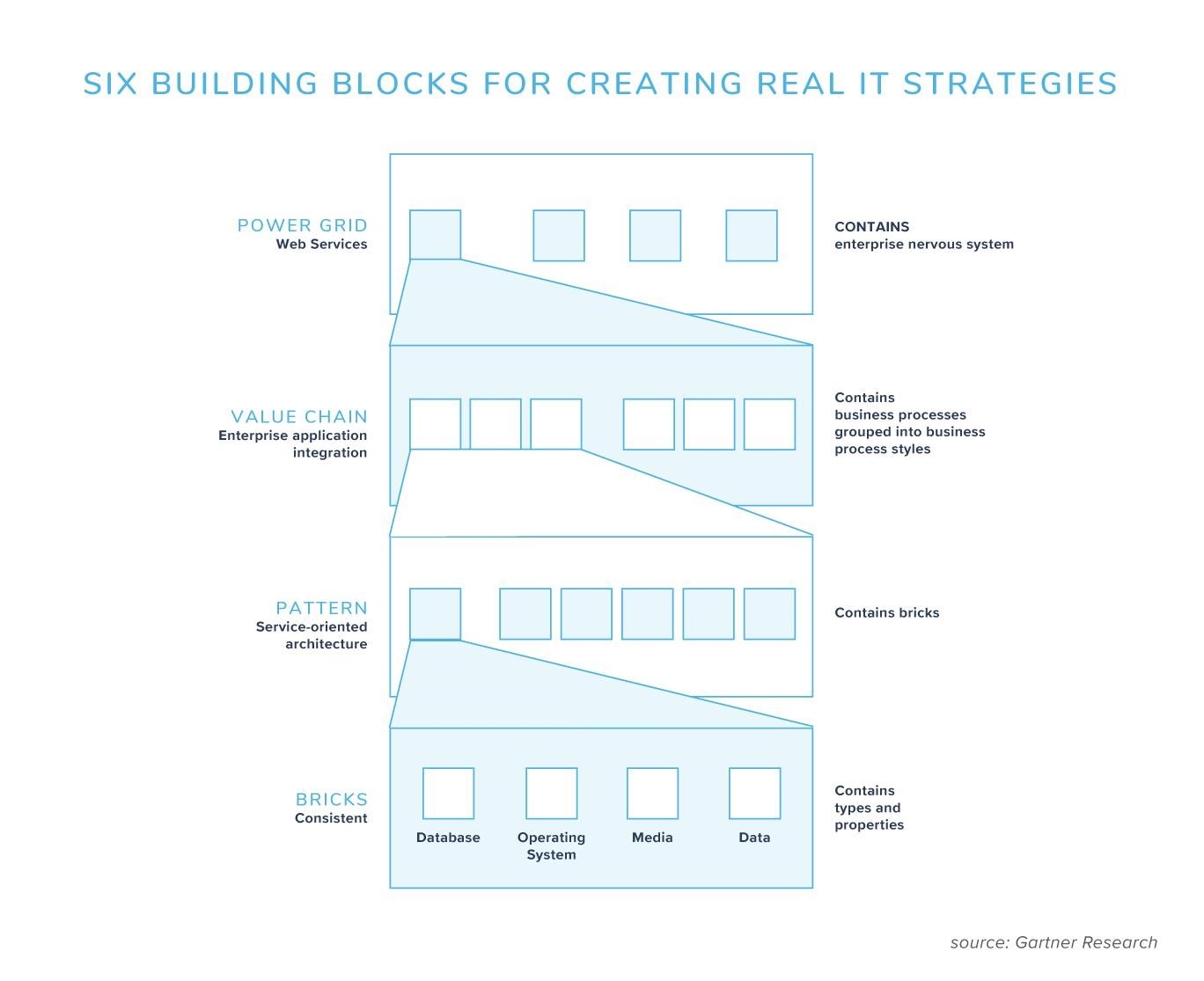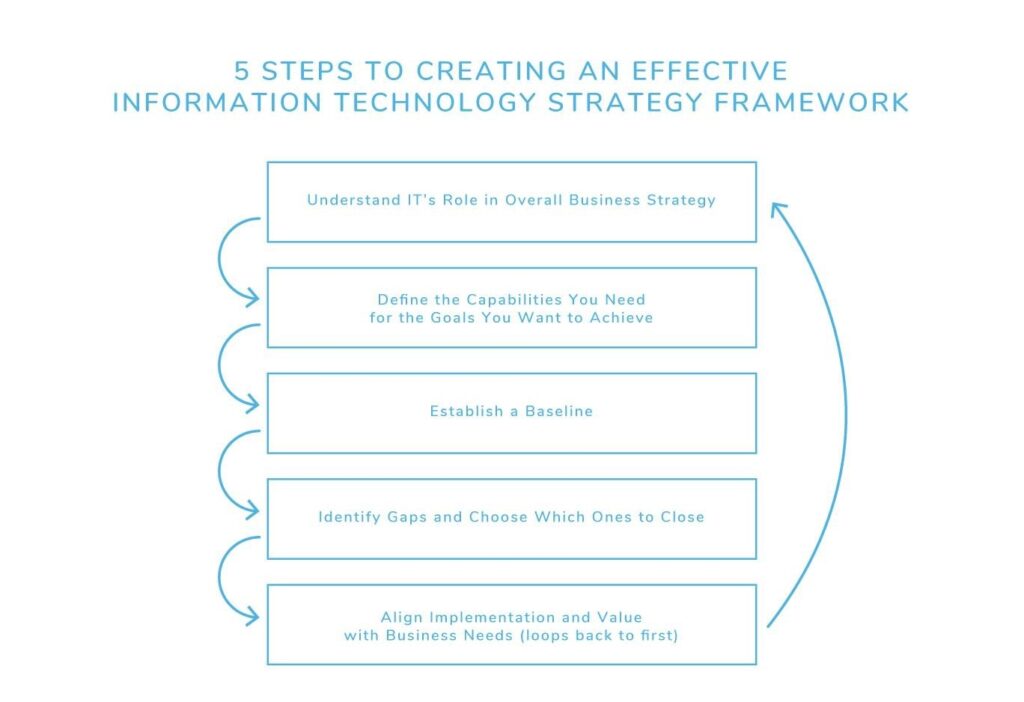This article will delve into the importance of an information technology strategy framework (IT strategy framework) and how it can guide your organization toward success in the digital age. You’ll learn about the key components of an effective framework, how to build one, and the steps involved in implementing it.
Why Do You Need an IT Strategy Framework?
An IT strategy framework is a roadmap that aligns your organization’s IT goals with its overall business strategy. It provides a structured approach to managing your IT resources, investments, and initiatives to ensure they drive value and support your business objectives.

Think of it as a compass that helps you navigate the complex world of IT and ensures that your technology investments are strategically aligned with your business goals. By developing a strong IT strategy framework, you can:
- Increase ROI: Identify IT investments that don’t contribute to business goals and eliminate them, leading to significant cost savings.
- Boost efficiency: Fine-tune IT initiatives to maximize return on investment and optimize resource allocation.
- Improve decision-making: Gain a comprehensive understanding of your IT landscape, enabling better decisions regarding budgeting, application lifecycle management, and enterprise-wide architecture planning.
- Enhance alignment: Create a clear roadmap that clarifies IT’s role in supporting the business strategy, improving communication and collaboration between IT and other departments.
Building Your Future: The 6 Foundational Elements of an IT Strategy Framework
Developing a successful IT strategy framework requires careful consideration of the following elements:
1. Approved Business Strategy
The first step is to thoroughly understand your organization’s business strategy. What are its goals, objectives, and timelines? What are the key challenges and opportunities it faces?
It’s essential to have a clear understanding of your organization’s strategic direction to ensure your IT strategy aligns perfectly and supports its growth.
2. Plan for Application Portfolio Change and Management
Digital applications are the backbone of many business processes. A well-defined IT strategy framework should include a plan for managing application changes, ensuring that they meet evolving business needs while minimizing disruptions.
This includes updating, retiring, or replacing applications based on their relevance and contribution to the business strategy.
3. Focus on Efficient Service and Operations
IT operations are the critical functions that keep your technology running smoothly. Your framework should address operational efficiency and service quality to ensure that users can access and utilize IT resources effectively.
Consider factors like:
- Service level agreements (SLAs): Establish clear expectations for IT service levels and performance metrics.
- Security: Implement robust security measures to protect sensitive data and systems from threats.
- Disaster recovery: Develop strategies for recovering from outages and ensuring business continuity.
4. Teachable Architecture
IT architecture represents the infrastructure that supports your organization’s IT systems, including hardware, software, networks, and data.

It’s important to communicate the key aspects of your IT architecture to stakeholders in a way that is easy to understand.
Explain how your IT architecture enables the delivery of services and supports business objectives.
5. Collaboration On The Right Financial Tools
Financial tools are essential for making informed decisions regarding IT investments. Collaborate with your finance team to understand the available tools and their application to IT initiatives.
Utilize tools like:
- Return on investment (ROI): Measure the value generated by IT investments compared to their cost.
- Payback period: Determine the time it takes for an IT investment to recover its initial cost.
- Discounted cash flow (DCF): Analyze the profitability of IT projects over time.
6. Skilled and Talented Folks
Your IT strategy framework should address the need for a skilled and talented workforce. Identify the skills and expertise required to achieve your IT goals and implement the planned initiatives.
Ensure your IT department has access to the right resources to effectively manage and execute your technology roadmap.
Putting it All Together: 5 Steps to Creating an Effective IT Strategy Framework
Now, let’s break down the steps involved in developing a robust IT strategy framework:
1. Understand IT’s Role in Overall Business Strategy
Thoroughly understand your organization’s business strategy, its goals, and its objectives. This will help you align your IT strategy with the overall business direction, ensuring that IT investments contribute to the organization’s success.
2. Define the Capabilities You Need for the Goals You Want to Achieve
Identify the IT capabilities required to achieve your business objectives. Consider factors like:
- Technology: What technologies are needed to support your business operations?
- Data: How will you manage and leverage your data effectively?
- Security: What security measures are necessary to protect your systems and data?
3. Establish a Baseline
Assess your current IT capabilities and compare them to the desired capabilities you identified in step two. This will help you understand the gaps that need to be addressed.
4. Identify Gaps and Choose Which Ones to Close
Prioritize the gaps identified in step three based on their impact on your business goals. Choose the most critical gaps to focus on first, and develop solutions to address them.
5. Align Implementation and Value with Business Needs
Develop an implementation plan that aligns with your business needs and timelines. Ensure that each IT initiative delivers tangible value and contributes to the organization’s success.
Conclusion
Developing a comprehensive IT strategy framework is vital for organizations of all sizes. It provides a clear roadmap for managing IT resources, aligning technology investments with business goals, and driving innovation.
Learn more about us at: javanet247
By following these steps, you can create a flexible and adaptable framework that helps you navigate the ever-changing world of technology and achieve your business objectives.

